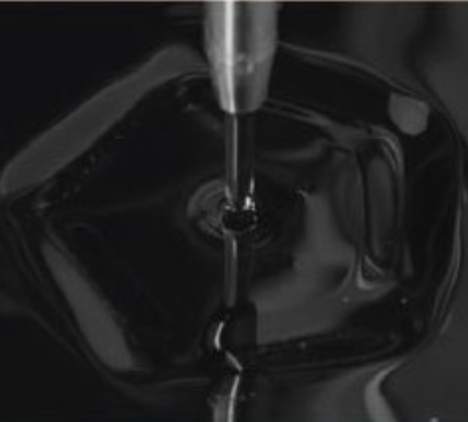
When a falling jet of fluid strikes a horizontal fluid layer, a hydraulic jump arises downstream of the point of impact, provided a critical flow rate is exceeded.We here examine a phenomenon that arises below this jump threshold, a circular deflection of relatively small amplitude on the free surface that we call the hydraulic bump. The form of the circular bump can be simply understood in terms of the underlying vortex structure and its height simply deduced with Bernoulli arguments. As the incoming flux increases, a breaking of axial symmetry leads to polygonal hydraulic bumps. The relation between this polygonal instability and that arising in the hydraulic jump is discussed. The coexistence of hydraulic jumps and bumps can give rise to striking nested structures with polygonal jumps bound within polygonal bumps. The absence of a pronounced surface signature on the hydraulic bump indicates the dominant influence of the subsurface vorticity on its instability. See paper: Labousse & Bush (2013)
This study prompted a theoretical description of the polygonal instability of toroidal vortices presented in the subsequent paper: Labousse & Bush (2015)
